Here are a couple of ‘tricks’ that you can use to enable you to remember these Key Signatures.
FlatsFor Key Signatures with
Flats, the key signature is the
second to last flat.
So in this example:
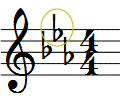
This is the
Key of E flat (Eb) because E flat (Eb) is the second to last flat in the Key Signature..
Here is another example:
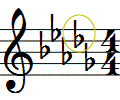
This is the
Key of D flat (D♭), because D flat (D♭) is the second to last flat in the Key Signature.
It is not the Key of D, because there is a D flat (D♭) in the Key, and therefore it is the Key of D flat (D♭).
SharpsFor Key Signatures with
Sharps, the
Key Signature is the note name half a step above the last sharp.Here is an example:
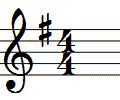
This is the key of G, because F# is the last sharp in the key signature, and the note of G is half a step above the note of F#.
Here is another example:
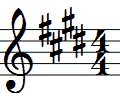
This is the Key of E, because E is half a step above D#, which is the last sharp in this key signature.
It is not the key of E#, because there is no E# in this key signature.
Now a final example:
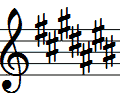
This is the Key of C#. Why?
Work it out, then go to the next Reply to confirm your reasoning.
Peter